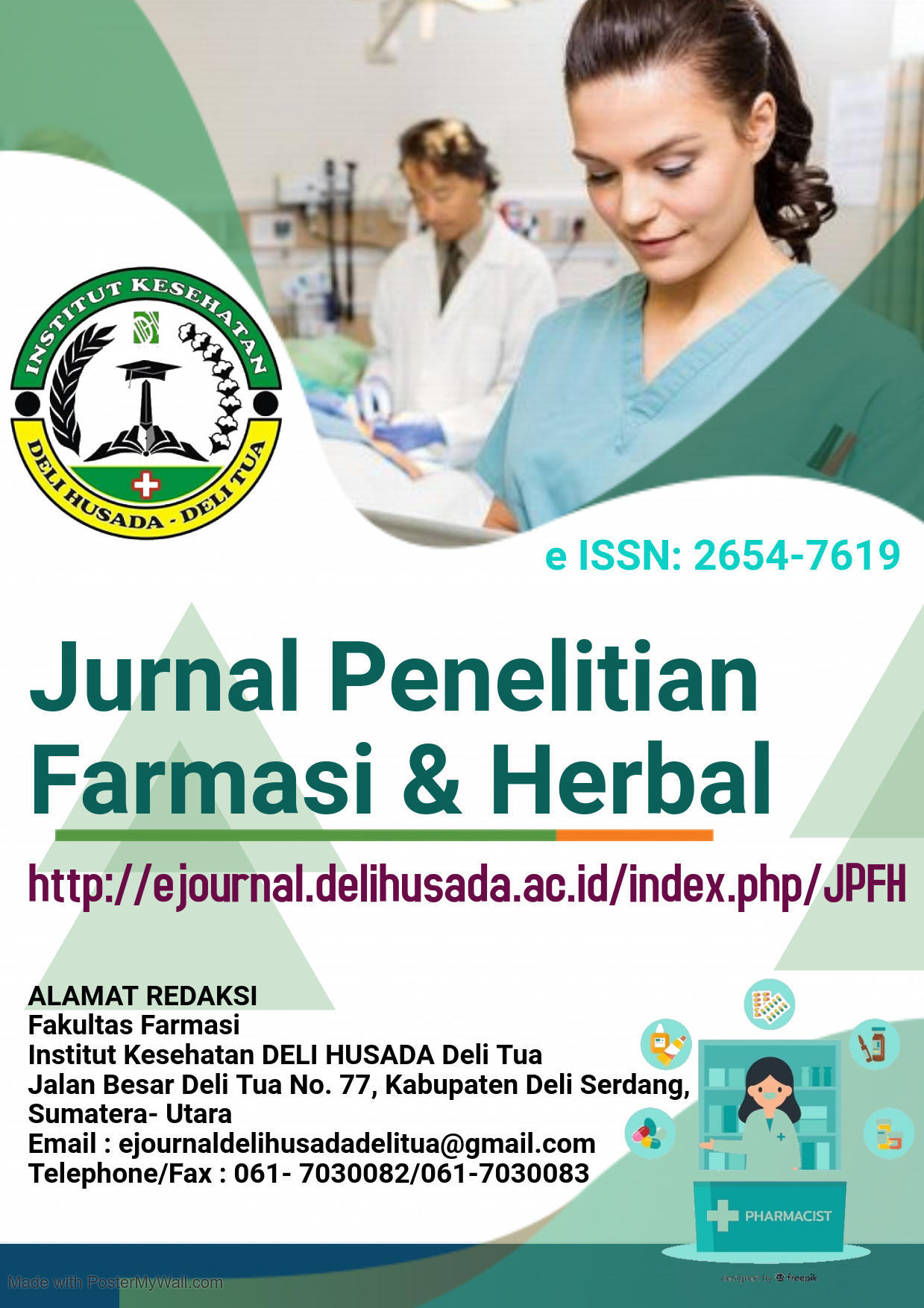PENGARUH MEDIA AUDIO DAN VIDEO TERHADAP MAHASISWA PROGRAM STUDI FARMASI DALAM KEMAMPUAN BERBICARA DI INSTITUT KESEHATAN DELI HUSADA DELI TUA
Abstract
This study aims to find out: whether the use of video is more effective than using audio in
improving students' pharmacists 'speaking skills. Find out whether the use of video is more
effective than general media use in improving students' speaking skills. Whether audio usage more
effective rather than using conventional media in improving students 'speaking skills. Find out
which media is the most effective among the use of Video, Audio, and conventional media on
improving students' speaking skills. This research is an experimental study using Quasi Pretest
Post-test Control Group design. The research sample was students pharmacist class 1A, 1B, and
1C taken by a simple cluster random sampling technique. This research shows that video usage is
the most effective medium among all of them, and the use of video is more effective than using
audio in improving students ' speaking skills.
Downloads
References
pendekatan praktek. Edisi Revisi V. Jakarta :
Rineka Cipta.
Ball, D. L., & Lampert, M. (1999). Multiples
evidence, time, and perspective. In
Lagemann, E. C. Editor, & Shulman, L.S.
Editor (Eds.), Education research: Problems
and possibilities. San Francisco: Jossey-Bass.
Broady, E. (1998). Learner attitudes towards selfdirection.
London, Middlesex University
Printing Services.
Brown, H, D. (2004). Teaching by principle: An
interactive approach to language pedagogy.
New York: Addison Wesley Longman, Inc.
Bryman, A., & Bell, E. (2007). Business research
methods: Revised edition.
Oxford: Oxford University Press.
Carter, R., & Nunan, D. (2001). The cambridge
guide to teaching english to the speakers of
other languages. Cambridge: Cambridge
University Press.
Harmer, J. (2007). The practice of English
language teaching. England: Longman.
Harmer, J. (2001). How to teach English: An
introduction to the practice of English
language teaching. Edinburg: Pearson
Education Lemited.
Hedge, T. (2000). Teaching and learning in the
language classroom. Oxford: Oxford
University Press.
Hohmann, U. (2005). Quantitative methods in
eduction research. Plymouth: University of
Plymouth.
Hughes, R. (2002). Teaching and researching
speaking.UK: Pearson Education Limited.
Korsvold, A. K., & Rüschoff, B. (1997).
Technologies in language learning and
teaching. Germany: Council of Europe
Publishing..
Mackey, A., & Gass, S. M. (2005). Second languge
research : Methodology and Design. London:
Lawrence Erlbaum Associates, Inc.
Permendikbud RI. (2014). Peraturan Menteri
Pendidikan Dan Kebudayaan Republik
Indonesia, tentang Pembelajaran pada
Pendidikan Dasar dan Pendidikan Menengah.
Jakarta.
Permendiknas. (2005). Peraturan Pemerintah
Republik Indonesia, tentang Standar
Nasional. Jakarta.
Republic of Indonesia. 2003. Act of the Republic
of Indonesia Number 20 Year 2003 on
National Education System. Minister of
National Education Republic of Indonesia.
Jakarta.
Azwar, S. (2009). Penyusunan Skala Psikologi.
Yogyakarta: Pustaka Belajar







